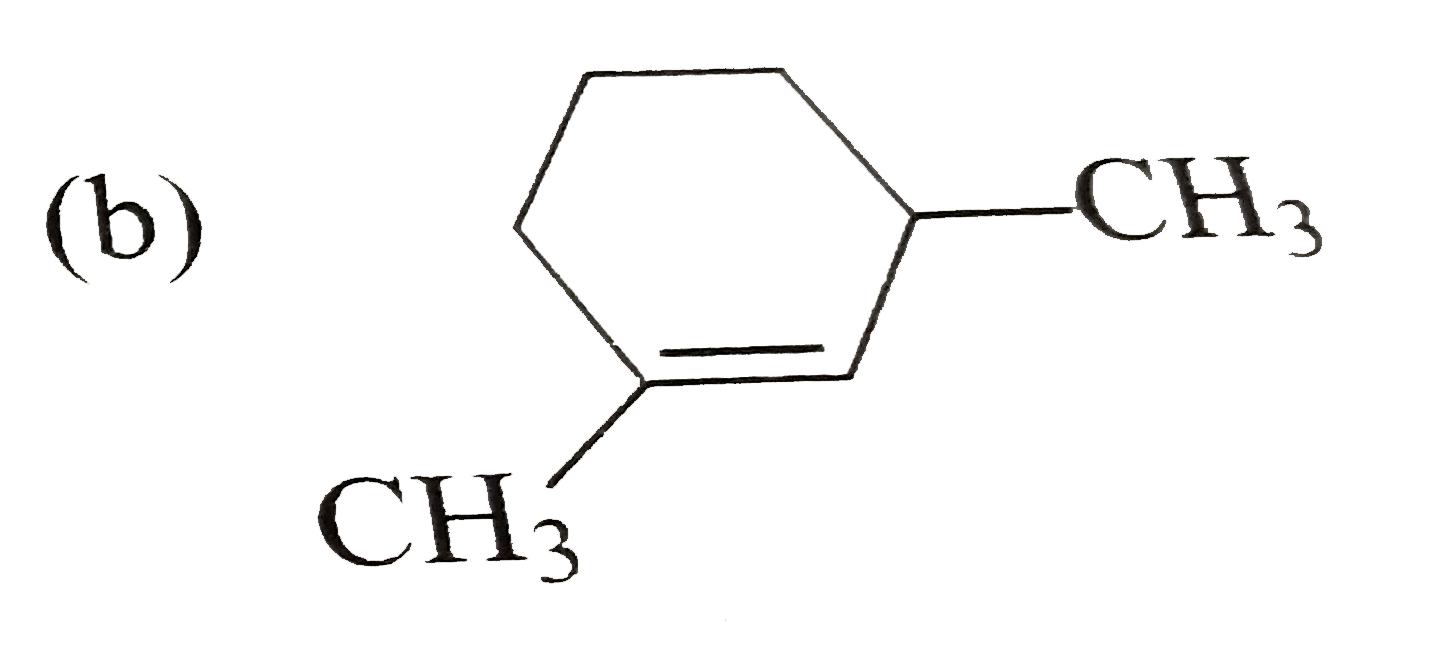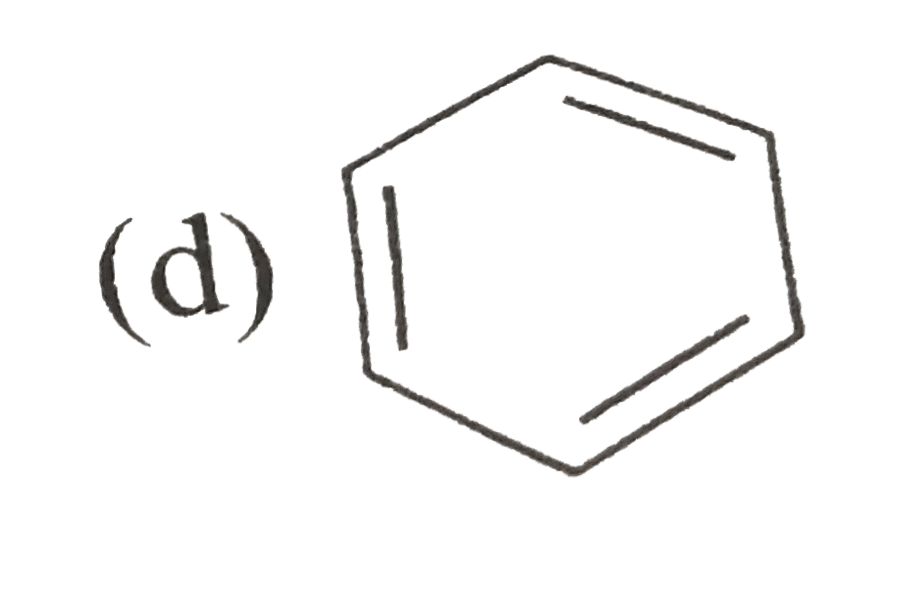In which of the following molecule/ions are the inductive effect, resonance effect, and hyperconjugation all operating simultaneously?
(CH3)+C
(CH3)3C−+CH2
CH2=CH−CH=O
CH3CH=CH−CH=O
The correct Answer is:D
To determine which of the given molecules/ions exhibits the inductive effect, resonance effect, and hyperconjugation simultaneously, we will analyze each option step by step.
Step 1: Analyze each compound
1. Option A: C₃H₃⁺ (C₃H₃ cation)
- Inductive Effect: The C₃H₃ cation has alkyl groups that exhibit a +I (inductive) effect.
- Resonance Effect: There is no resonance effect since there are no π bonds or lone pairs that can delocalize.
- Hyperconjugation: Hyperconjugation can occur due to the presence of adjacent C-H bonds.
- Conclusion: Only +I effect and hyperconjugation are present; no resonance effect. This option is not correct.
2. Option B: C₃H₃C⁺ (C₃H₃C cation)
- Inductive Effect: The C₃H₃ group exhibits a +I effect.
- Resonance Effect: There is no resonance effect since there are no π bonds or lone pairs for delocalization.
- Hyperconjugation: Hyperconjugation is present due to adjacent C-H bonds.
- Conclusion: Only +I effect and hyperconjugation are present; no resonance effect. This option is not correct.
3. Option C: C₂H₄=CH-C(=O) (Alkenyl ketone)
- Inductive Effect: The double bond and carbonyl group can exhibit resonance but not a significant inductive effect.
- Resonance Effect: There is a resonance effect due to the carbonyl group (C=O) which can stabilize the structure.
- Hyperconjugation: There is no hyperconjugation since there are no adjacent C-H bonds that can stabilize through hyperconjugation.
- Conclusion: Only resonance effect is present; no inductive or hyperconjugation effects. This option is not correct.
4. Option D: C₃H₃-CH=CH-C(=O) (Alkenyl ketone with alkyl group)
- Inductive Effect: The C₃H₃ group exhibits a +I effect on the adjacent carbon.
- Resonance Effect: The double bond and carbonyl group can participate in resonance, stabilizing the structure.
- Hyperconjugation: Hyperconjugation occurs due to the adjacent C-H bonds of the alkyl group.
- Conclusion: All three effects (inductive, resonance, and hyperconjugation) are present in this compound.
Final Answer
The correct option is D (C₃H₃-CH=CH-C(=O)), as it exhibits the inductive effect, resonance effect, and hyperconjugation simultaneously.
- Inductive Effect: The C₃H₃ cation has alkyl groups that exhibit a +I (inductive) effect.
- Resonance Effect: There is no resonance effect since there are no π bonds or lone pairs that can delocalize.
- Hyperconjugation: Hyperconjugation can occur due to the presence of adjacent C-H bonds.
- Conclusion: Only +I effect and hyperconjugation are present; no resonance effect. This option is not correct.
- Inductive Effect: The C₃H₃ group exhibits a +I effect.
- Resonance Effect: There is no resonance effect since there are no π bonds or lone pairs for delocalization.
- Hyperconjugation: Hyperconjugation is present due to adjacent C-H bonds.
- Conclusion: Only +I effect and hyperconjugation are present; no resonance effect. This option is not correct.
- Inductive Effect: The double bond and carbonyl group can exhibit resonance but not a significant inductive effect.
- Resonance Effect: There is a resonance effect due to the carbonyl group (C=O) which can stabilize the structure.
- Hyperconjugation: There is no hyperconjugation since there are no adjacent C-H bonds that can stabilize through hyperconjugation.
- Conclusion: Only resonance effect is present; no inductive or hyperconjugation effects. This option is not correct.
- Inductive Effect: The C₃H₃ group exhibits a +I effect on the adjacent carbon.
- Resonance Effect: The double bond and carbonyl group can participate in resonance, stabilizing the structure.
- Hyperconjugation: Hyperconjugation occurs due to the adjacent C-H bonds of the alkyl group.
- Conclusion: All three effects (inductive, resonance, and hyperconjugation) are present in this compound.
The correct option is D (C₃H₃-CH=CH-C(=O)), as it exhibits the inductive effect, resonance effect, and hyperconjugation simultaneously.
Topper's Solved these Questions
- GENERAL ORGANIC CHEMISTRYBook:R SHARMAChapter:GENERAL ORGANIC CHEMISTRYExercise:Level - IV
Explore 3 Videos
- GENERAL ORGANIC CHEMISTRYBook:R SHARMAChapter:GENERAL ORGANIC CHEMISTRYExercise:Archives
Explore 36 Videos
- GENERAL ORGANIC CHEMISTRYBook:R SHARMAChapter:GENERAL ORGANIC CHEMISTRYExercise:Level - II
Explore 4 Videos
- EQUILIBRIUMBook:R SHARMAChapter:EQUILIBRIUMExercise:ARCHIVES
Explore 69 Videos
- ISOMERISMBook:R SHARMAChapter:ISOMERISMExercise:Archives
Explore 11 Videos
Similar Questions
Knowledge Check
Which of the following groups shows negative inductive effect?
A−COO−B−COOHCRS−D−CH3In which of the following molecules, the substituent does not exerts resonance effect ?
AC6H5NH2BC6H5+NH3CC6H5OHDC6H5ClIn which of the following molecules all the effects namely inductive, mesomeric and hyperconjugation operate?
A B
B C
C D
D
In which of the following molecules or ions the resonance effect is NOT Present
View SolutionIn which the following molecules , the substituent does not exert its resonance effect?
View SolutionWhich of the following statements is correct about inductive effect
View SolutionIn which of the following compounds, does the substituent not exert its resonance effect?
View SolutionResonance effect involves:
View Solution

